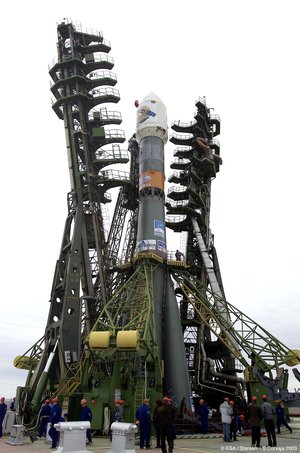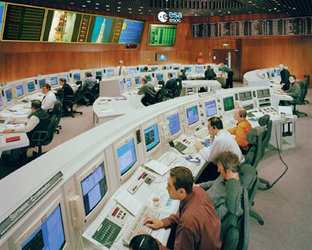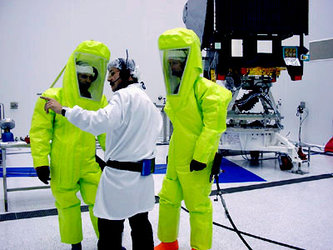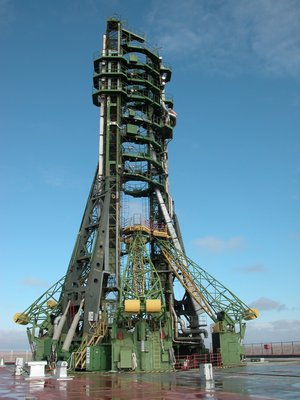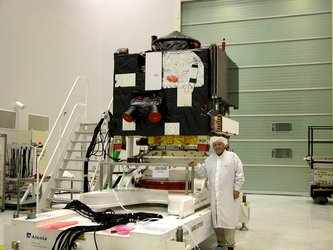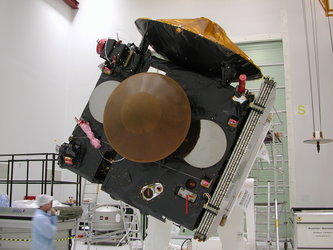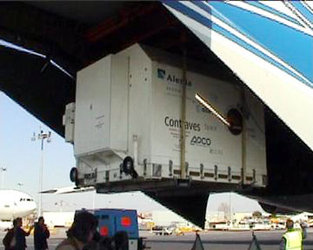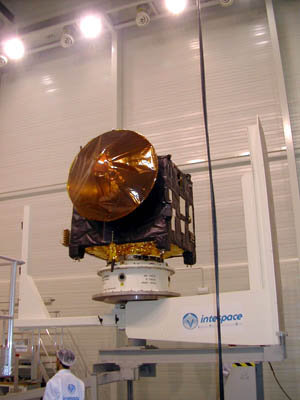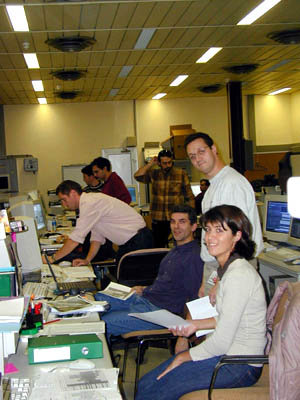"After the vacuum, things may get nasty"
Mars Express launch diary 2
John Reddy, Principal Electrical Systems Engineer for Mars Express, reports on Thermal Balance/Thermal Vacuum test, now successfully completed.
"The objective of the test was to demonstrate the overall capability of Mars Express to keep temperatures inside the main body at reasonable levels for the satellite electronics. It took many hours of testing but we're very happy with the results. The satellite units and experiments behaved very well under vacuum and at extreme temperatures.
"A successful outcome like this is great news. We have overcome a difficult hurdle in the extremely tight schedule in the programme towards delivering the spacecraft on time to Baikonur in Kazakhstan. The launch date is at the end of May 2003. It looks like all the problems and teething troubles we saw during the development are behind us. We have a spacecraft that we think will surpass its expectations in terms of performance and science.

"That's worth stopping to celebrate but, actually, there has scarcely been time to celebrate our success. Now we're busy installing vital facilities on the spacecraft. For example, there is the high-gain antenna, which allows communications between the satellite and Earth, and the solar arrays, which provide power and charge the spacecraft batteries. Making sure these are integrated correctly leaves no time for celebration.
"After we've integrated these, we have some nasty surprises for our spacecraft. We're going to strap it to a large vibrating table and violently shake it. Then we'll put it inside an acoustic room and 'shout' at it. Both of these treatments should simulate the nerve-wracking effects of the launch into space.
"After that, we want to show that once the spacecraft in in orbit the solar panels will open out gracefully from their folded position during launch. Engineers have designed the springs and hinges to work in space where there are no effects of gravity. On Earth, however, it is quite difficult to simulate this.
"We'll have to use a special arrangement of supports, pulleys and counterbalances to support the solar panels. Once the solar panels and the testing support are correctly set up, we'll command the spacecraft to release the array. We expect the panels to extend smoothly to their full length and lock into position.
"After the thermal and mechanical tests, we carry on with performance testing. The next important tests are the 'Radiated Electromagnetic Compatibility and Radio Frequency Compatibility' testing. More about this next time!"



